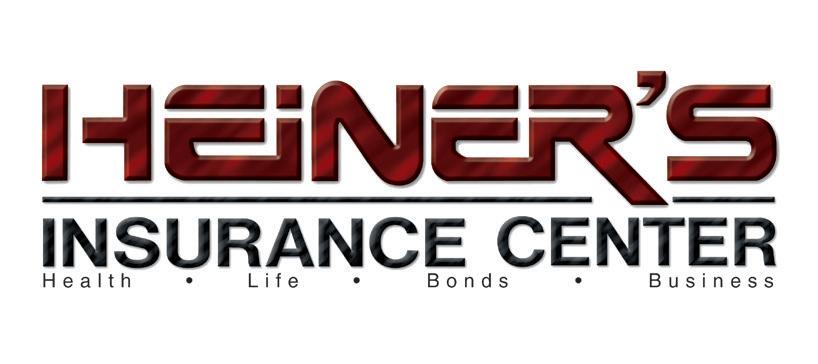
6 minute read
HOME
Special article brought to you by Heiner's Insurance Center 5 Benefits of Dash Cams
POSTED BY LISA D.. @ ACUITY Dashboard cameras—have you seen them in cars? Cameras mounted to the dashboard are not just in police cars anymore. A camera that records sounds and images both outside and inside your car can have several benefits, including the following:
Advertisement
PROOF OF AN ACCIDENT: A video record can help prove you were not responsible for an accident or traffic violation. It can also help expedite a claim with your insurance company.
EXTRA SET OF EYES: Some dash cams continue to record when your car is not in use, like when parked, providing the ability to capture hit-and-runs or breakins.
IMPROVE YOUR DRIVING: Driving videos can be used to review your driving skills. Some dash cams also have builtin safety warnings, like if your car is too close to the vehicle in front of you or if your car starts to drift out of its lane.
MONITOR TEEN DRIVING: Parents can view how their teen is driving and see who else is in the car. Dash cams with GPS can also track when and where they were driving.
ROAD TRIP MEMORIES: Since the camera will be recording, quick and unexpected moments can be captured safely without reaching for a phone or being distracted while driving. These can be shared or downloaded to another device. The cost of a dashboard camera can range from $25 to $250, depending on the features included. However, it may pay for itself after using it to fight a

ticket or get reimbursed for your auto insurance deductible. Installing a dash cam typically involves applying the camera’s suction cup to a window or the dashboard—just don’t place it in a spot that obstructs the driver’s view.
“We pay for Ashes and Crashes” Since 1948 606 Washington Blvd • Ogden, Utah 84404 Ph: (801) 621-2620 Fax: (801) 621-7642 www.heinerins.com | 1-800-565-7720



Do More with Your Home's Equity Special article brought to you by Wasatch Peaks Credit Union
Considering some upgrades for your home? For many people, your home is a large piece of your net worth and, if you’ve already paid for your house or own a large equity, it can be your best financial asset to make home enhancements. Using the equity that’s in your home to finance improvements is the cheapest way to increase the value of your holding. There are two major ways to utilize this equity, each with pros and cons that may make one a better fit for you. We’re here to help you decide between the two. HOME EQUITY LINE OF CREDIT The first is a home equity line of credit, or HELOC, which is a revolving credit line that allows you to borrow money as needed to a limit during a specified time period, with your home serving as collateral for the loan. At Wasatch Peaks Credit Union, we approve applicants for a specific amount of credit by taking a percentage of their home’s appraised value and subtracting the balance owed on the mortgage. A HELOC will allow you more borrowing freedom than fixed home equity loans, with an extended draw period during which you can withdraw money as needed with spending flexibility. This helps when you are unsure of your projected budget and anticipate potential future needs. Don’t forget to consider interest rate fluctuation during the loan and prepare to budget for variable payments. SECOND MORTGAGE The second type is known as a second mortgage, which is also secured by your home’s equity and allows you to borrow a fixed amount that you receive as a one lump sum. This enables you to get all the funds right at once to get moving on your improvements! The amount you can borrow is like a HELOC as we can utilize a percentage of your home’s value, minus the balance of your mortgage. Most second mortgages have a fixed interest rate, a fixed term, and a fixed monthly payment. With a second mortgage, you have set terms and payments that won’t vary month to month and a consistent rate throughout the loan. We recommend checking with your tax advisor because interest paid on this type of loan may be tax deductible. As you only receive one lump sum, you should consider your spending budget and responsibility. So, let’s talk. You supply the ideas, and Wasatch Peaks can supply the loans to make your dreams a reality. Whether you’re wanting the deck of your dreams, to refresh a kitchen, or even to give the whole house a new paint job, we’re ready to help! Call our specialists at 801-627- 8700 or apply online at wasatchpeaks. com and start enjoying the equity in your home today.


Financial Tips on How to Prepare for Divorce Special article brought to you by IntergraLAW
BY HAYLI DICKEY Hi! My name is Hayli Dickey, and I am an associate attorney at IntegraLaw. I focus mainly on Family Law and regularly find myself advising clients about how to prepare for divorce. Often, my clients are still living with their spouse, which means careful planning is necessary. Here are two suggestions I offer anyone planning to initiate a divorce action: (1) FINANCIAL UNMINGLING: Married couples commonly combine most of their finances and accounts. A family dynamic I come across often includes one party who has acted as the main breadwinner and the other party who has mainly raised the children and cared for the home. Under these circumstances, the party who has mainly raised the children and cared for the home likely has no access to income. This becomes problematic when the parties start to unmingle their finances and one party no longer has access to incoming money for support during the divorce proceedings. Plan for your divorce by making sure you have access
to financial resources. Neither party should be depleting the marital property, but it is common practice for a spouse who is not working to take one-half of the money held in the parties’ joint checking and savings accounts, and deposit those funds into a new personal account. This money may be used for the party’s needs during the divorce. (2) KNOW YOUR FINANCES: Full financial disclosures are required as part of a divorce proceeding. These financial disclosures are intended to give both parties a comprehensive understanding of their assets and debts. However, sometimes assets are hidden or not disclosed. Hidden assets are not easily found, and it is especially difficult to find unknown assets. To hinder the possibility of hidden assets (and debts), both parties should know and have a clear understanding of the family finances, both debts and assets. Too often, one party is in charge of paying bills and keeping the family finances, and the other party has no idea what is coming in or going out. The party without that knowledge is left vulnerable in a divorce proceeding, specifically when the parties or the court is determining
how the assets should be equitably divided. You should know your family’s finances, and make sure you have access to and/or copies of that information prior to initiating the divorce proceedings. It is helpful to gather copies of the family financial documents (taxes, bank accounts, credit cards, loan documents, retirement accounts, etc.) for the last three years before you initiate divorce proceedings. Both of these suggestions are intended to help the parties meaningfully and honestly participate in a divorce action. Most family law cases will settle with an agreement between the parties, but the best settlements occur when the parties are on an even playing field, and each has access to information and funding. Hayli Dickey, Associate Attorney





